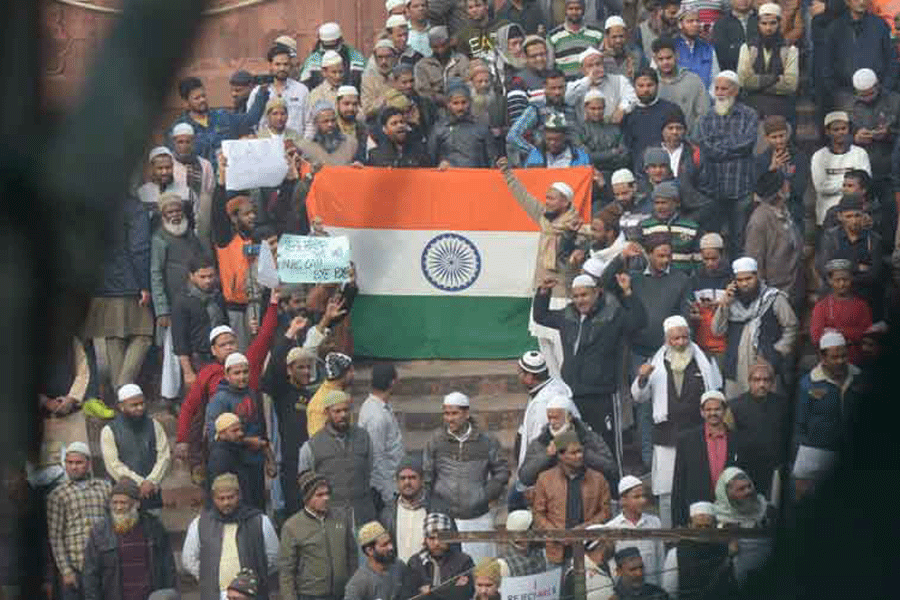After keeping it in the cold storage for four years, the Centre notified the rules for the Citizenship (Amendment) Act 2019 to confer citizenship on Hindus, Buddhists, Jains, Sikhs, Parsis and Christians from Pakistan, Bangladesh and Afghanistan. Let’s lay aside the political considerations and look at the ideological biases of the new citizenship regime. By excluding Muslims from the ambit of the Act, the current regime creates a sectarian model of citizenship rooted in an exclusionary idea of nationhood. This is, thus, a reiteration of the idea of the Hindu rashtra, which is the leitmotif of the Bharatiya Janata Party’s ideology.
The reading of history that informs this project locates the ‘Indian nation’ in a barely identified antiquity, thereby endowing it with a timeless, ‘Hindu’ unity. This imputation is wittingly divisive and exclusionary. In a statement made in March, the Dravida Munnetra Kazhagam MP, A. Raja, contended that India was not a nation because it did not have one language, one culture and one tradition. Raja’s monist construction is palpably erroneous: no modern nation meets these criteria. Although it was attacked by the BJP, it paradoxically resonates closely with its homogenisation project. But it also opens up a discussion on the Indian nationhood’s provenance, which bears directly on the appreciation of its diversity.
One view is that it originates in the mists of some timeless antiquity. Some would propose the Indus Valley civilisation as the point of origin, some the early Vedic age, when the speakers of the Indo-Aryan languages settled in the Indo-Gangetic plain.
Let’s distinguish between nation and nation state to get a clearer picture. The Indian nation state emerged from British rule, with territorial integration, the imposition of standard systems of government and a united, ‘nationalist’, anti-colonial opposition. Independence built on the project, absorbing the princely states and adding other features; the crucial ingredient of the nation state was sovereignty. Precolonial empires — Maurya, Gupta and Mughal — neither had the territorial reach of the British imperium nor its penetration into subjects’ lives. Their imperial interventions were limited and provisional. There was no real question of the formation of a nation state before Independence.
What then of the nation? The argument that locates its origins in antiquity identifies subcontinental cultural, religious and social-structural unities that made India a nation long before it became a political unity. The social unities usually refer to the ubiquity of the caste system.
But this argument doesn’t wash. There was no cultural unity preceding the unifying forces of colonialism: what existed was the unity of a thin slice of Brahmanical elites who engaged in cultural and religious dialogue based on a monopoly of a certain kind of learning and knowledge of Sanskrit. Similarly, there was no ‘uniform’ Hinduism beyond the theologies and the prescriptions of the same elite. Everyday religion was heterodox, influenced by local, non-Brahmanical forms of worship, ritual and naturalist theogonies. Nor did caste provide a rigid, subcontinental structure of social organisation. Local manifestations of the caste system were, and are, protean.
This historical excursus is to suggest that although Raja was wrong about the homogeneity of nations, he was unwittingly right about the pluriversality of the Indian nation.
In the first decades after Independence, when nation-building was an urgent project, ‘unity in diversity’ was its exigent mnemonic. Now, with the nation fashioned, the current regime is pursuing a project of uniformity in unity, evident in its endorsement of cultural homogeneity based on a levelled Hinduism and the rhetoric of ‘One Nation,
One Everything’.
The inclusionary spirit of nation-building was distilled in the Constitution that directs the State to protect equality and non-discrimination that nurture the nation’s diversity. The dichotomy, thus, is between diversity and coercive uniformity.
Suhit K. Sen is the author of The Paradox of Populism: The Indira Gandhi Years, 1966-77











